-
Chandrakant 'CK' Isi
08th Oct 2013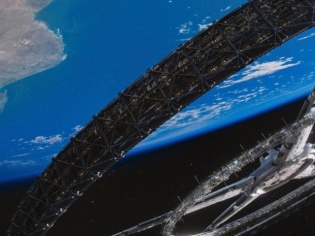
In 2009, South African/Canadian Director, Neill Blomkamp took critics by surprise with his sleeper-hit District 9. While technology in most Hollywood movies comes from children's literature (sounds cooler than Comic Books) Neill’s movies adhered to actual science. This movie beautifully handled many social issues, including racism and corruption, through the medium of extraterrestrials. District 9 was based on Director's own low-budget 6 minute feature called Alive In Joburg, which Peter Jackson stumbled upon. The LOTR Producer and Director was so impressed by the short-film that he offered him 30 million dollars to turn it into full-fledged movie.
After almost four years, Neill is back with another cerebral cinema — Elysium. In 2159, the Earth is ruined due to overpopulation. The rich reside on a lavish space station Elysium, while the rest suffer on Earth. The Elysium Administration headed by President Patel (trust Indians with power and corruption) does everything to stop illegals from entering the space station. This is where you realise that this futuristic story is actually a mirror to our present-day world. Even in 21st century, our society is extremely polarised. The super-rich are untouched by the consequences faced by lesser mortals. So putting these 1 percent of population on a posh space station is a metaphor to highlight the age-old divide between the rich and poor. If you complain about the lack of substance in movies these days, you shouldn't miss this one.
Elysium is not only about the strong message though. The movie flaunts stunning special effects, which Neill is known for. You may find the Torus-shaped space station and exoskeleton suit too far-fetched, but the technology shown in this movie adheres to the laws of physics, and possible to build in future. Heck, the primitive version of the Exosuit has already been turned into a reality by American company, Raytheon. With this wearable robot, the soldiers can punch through wooden blocks or effortlessly lift around 100 kg payload. Click here, to watch the video demonstration.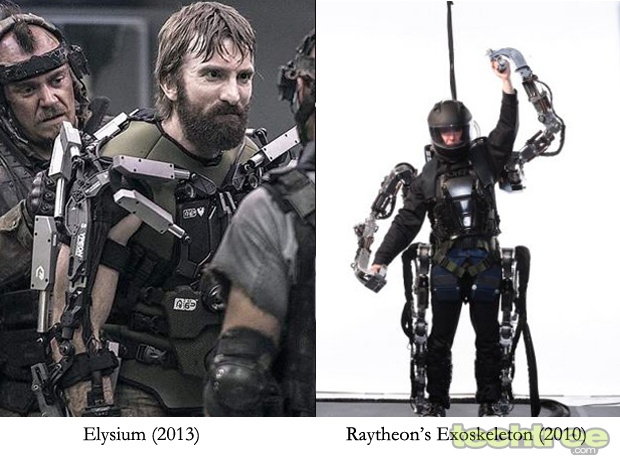
Elysium's design looks very similar to the space station seen in 1968's movie 2001: A Space Odyssey. Why? Because that's the right way of building a habitat zone in space. Torus-shaped space stations can simulate Earth-like gravity with the help of circular motion.
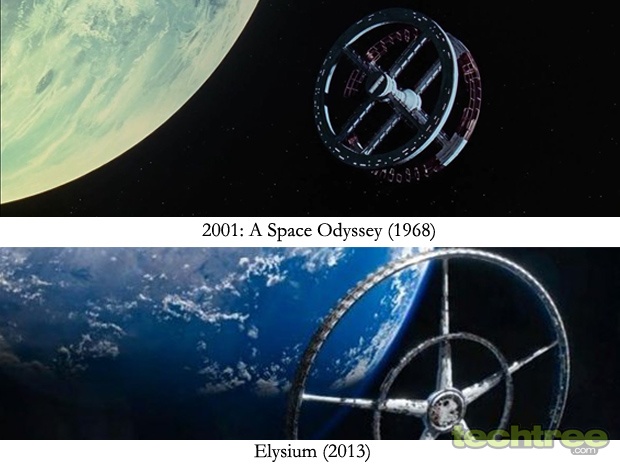
Sounds impractical? Have a look at Stanford Torus concept, which is a result of NASA and Stanford University's joint study in 1975. In this configuration, wheel-shaped space station rotates at a certain rate to simulate gravity with the help of centrifugal force. If you've watched the movie, you'd point out that the Elysium seemed standstill in the movie. The reason here is that Neill's version of space station is much bigger than what's there in Stanley Kubrick's movie. Because of its sheer size, Elysium can generate 1g at a much slower spinning rate. So while it may look immobile, the Elysium actually rotates, but very slowly.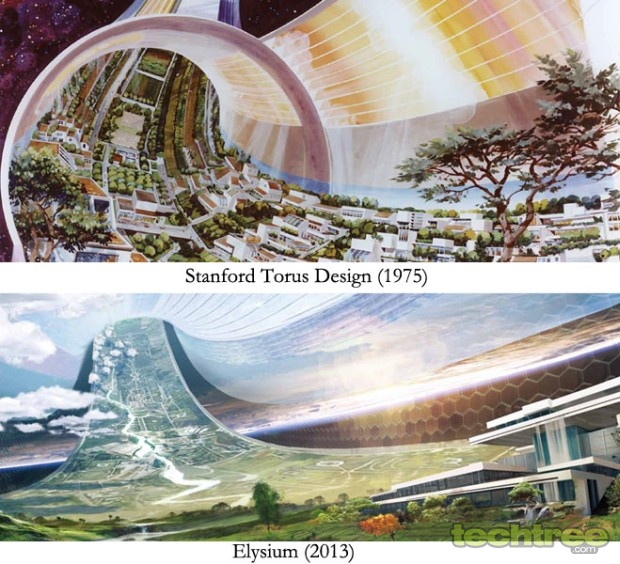
The bipedal robots are another interesting aspect of this movie. Those robot cops are taken from the director's 2004 short film Tetra Vaal. The film was about how robotics can help police maintain law and order in third world countries. Since Elysium has a quite similar setting, those robots fit perfectly in that movie. So is it feasible to create such machines? The answer is yes. Thanks to Honda (the car-maker), the humanoids already exist. (Un)Fortunately, they don't wield a gun yet.
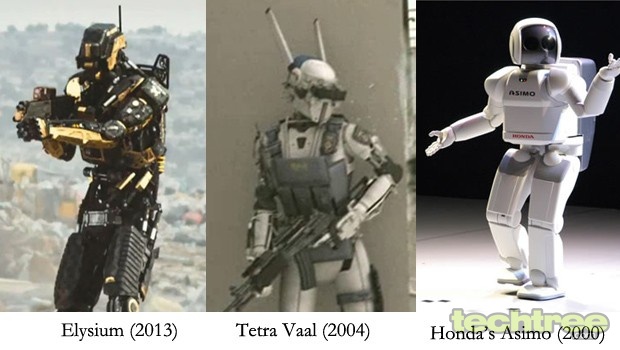
All in all, Elysium isn't your average blockbuster that uses story-line as an excuse to shove mindless action down our throat. It’s one of those rare movies that offers a fine blend of brain-fodder and spectacular visuals. So make sure not to miss this one.
Science Behind Elysium | TechTree.com
Science Behind Elysium
And why you shouldn't miss this underrated movie.
News Corner
- DRIFE Begins Operations in Namma Bengaluru
- Sevenaire launches ‘NEPTUNE’ – 24W Portable Speaker with RGB LED Lights
- Inbase launches ‘Urban Q1 Pro’ TWS Earbuds with Smart Touch control in India
- Airtel announces Rs 6000 cashback on purchase of smartphones from leading brands
- 78% of Indians are saving to spend during the festive season and 72% will splurge on gadgets & electronics
- 5 Tips For Buying A TV This Festive Season
- Facebook launches its largest creator education program in India
- 5 educational tech toys for young and aspiring engineers
- Mid-range smartphones emerge as customer favourites this festive season, reveals Amazon survey
- COLORFUL Launches Onebot M24A1 AIO PC for Professionals







TECHTREE